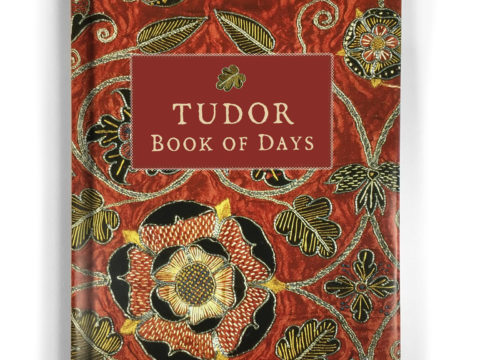Mary, Queen of Scots: Life Story
Chapter 14 : The Queen Marries
Another candidate now came forward – Mary’s cousin, Henry Stuart, Lord Darnley [1]. Lord Darnley’s mother, Lady Margaret Douglas, was the granddaughter of Henry VII, through her mother, Margaret, Dowager Queen of Scots’ second marriage to Archibald Douglas.
This gave Lord Darnley the position of nearest male heir to Elizabeth. His father claimed to be Mary’s heir as he disputed the legitimacy of the Duke of Châtelherault. Thus, Darnley had credible claims to be heir to both England and Scotland.
Darnley’s mother had suggested the match when Mary was first widowed, sending her young son to France with condolences, but Mary had paid no attention to a youth some four years younger than herself, who was not a prince. Since then, Lennox, who had been exiled from Scotland in 1544, for his part in English attempts to capture the Hamilton fortress of Dumbarton, had been forgiven, at Elizabeth’s request, and allowed to return to his native land.
Elizabeth suggested to Melville that Darnley might be her other choice for Mary – she certainly thought Melville would like the idea. Quite what Elizabeth really wanted is unclear – and perhaps she did not know herself. On paper, the blending of Darnley and Mary’s claim to the English succession was dangerous for Elizabeth, but perhaps she knew enough of the young man’s character to think the risk small – and perhaps she thought the Lennox Stuarts less likely to provide backing to Mary than a foreign prince. Perhaps she also thought it would stir up tensions between Lennox and Châtelherault.
Mary requested Elizabeth to let Darnley travel to Scotland about legal matters related to the return of his father’s estates. Elizabeth granted consent. He reached Scotland in early February and was introduced again to Mary on 27th February 1565 at Holyrood. The first thing Mary is likely to have noticed about him, was his height. Mary herself was exceptionally tall, and Darnley was one of the few men she would have met who overtopped her, at something over 6ft.
Darnley had been well-educated in the Renaissance mould – able to play various instruments, to dance and to write poetry, as well as speak elegant French. Unfortunately, perhaps because six of his siblings died at birth or in infancy, leaving only one other brother, he had been thoroughly spoilt by his parents, and considered himself eminently deserving, not only of Mary’s approval, but also of the position of King of Scots.
Initially, Mary seemed to be no more than courteous to her cousin, whilst aware of his suitability as a spouse. His attraction increased when it became clear that, even if she married Dudley, Elizabeth would not confirm her succession rights.
Moray strongly disapproved of the match – Darnley, although he did not appear to have any interest in religion, was considered to be a Catholic, like his mother, although Lennox was happy to profess either faith or none. Darnley attended a sermon by Knox, but the preacher did not endear himself, fatiguing the young man with the length of the sermon.
Darnley fell ill in the spring of 1565, and whilst nursing him, Mary seems to have moved from an appreciation of his merits as a Catholic, youthful husband with a strong claim to the English throne, to a more personal desire to marry him. She did not anticipate any objection from Elizabeth – after all, the English queen knew the match was a possibility when Darnley went to Scotland.
But, to Mary’s astonishment, Elizabeth claimed to be appalled at the very idea. The Countess of Lennox was dispatched to the Tower of London, and Darnley, as an English subject, forbidden to marry the Queen of Scots, and summoned back to England.
Randolph, deputed by Elizabeth to remonstrate with her cousin, wrote back that Mary, once so wise and sensible, was a fool for love, and determined to marry Darnley, who was already alienating everyone else with his pride and presumption. Randolph wrote that ‘…it is greatly to be feared that he can have no long life among these people.’
Moray, too, disapproved of Mary’s choice; not only Darnley’s religion and character were against him, but the likely loss of his position as Mary’s chief advisor, once the arrogant princeling was firmly in the saddle. He withdrew from the court, and began making noises that were distinctly rebellious – hoping to find English support to prevent Mary’s marriage to a Catholic.
The Hamiltons, of course, also hated the match as, if Mary now produced children, the crown would go to the Lennox Stuarts, with whom they had been feuding for fifty years.
Despite all opposition, Mary, having requested a papal dispensation for a union with her cousin, married Darnley on 20th July 1565. After the ceremony, Darnley withdrew from the chapel, and Mary heard Mass alone – perhaps he was signalling religious ambivalence, or perhaps he just did not care for church services. Later that day, the royal heralds proclaimed him as Henry, King of Scots.
As Mary had bestowed the title herself, without consent from the Scots Parliament, it did not automatically confer on him the Crown Matrimonial, which her first husband had enjoyed. The Crown Matrimonial had not only given the rights of the monarch to François, but would have enabled him to retain the crown, had Mary pre-deceased him without children. His father was pleased by his son’s new title, but no-one else could raise so much as a cheer, when King Henry was again proclaimed by the heralds.
[1] The spelling of the royal family’s name was Stewart. Lord Darnley’s father, Matthew, Earl of Lennox, had adopted the French spelling of Stuart when exiled in France.
